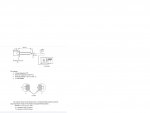Erik van Gerven
Member
Hi all,
I am planning the build of an Infrared temperature scanning camera. I want to use 2 servo's to pan and tilt a pyrosensor. There will be a fresnel lens in front of the sensor to focus.
This way I can generate a value for any given point of the subject together with the x,y coordinates. So far pretty simple to mnage on a picaxe.
Second is to know how to convert the measured values to an image of some format, usable on the computer. Does anyone know a usable image format and how the data in it is organised?
I am planning the build of an Infrared temperature scanning camera. I want to use 2 servo's to pan and tilt a pyrosensor. There will be a fresnel lens in front of the sensor to focus.
This way I can generate a value for any given point of the subject together with the x,y coordinates. So far pretty simple to mnage on a picaxe.
Second is to know how to convert the measured values to an image of some format, usable on the computer. Does anyone know a usable image format and how the data in it is organised?

